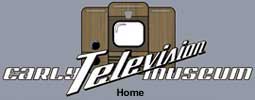Early Television Museum 2007 Convention PresentationTelevision at Kansas State University Manhattan, Kansas 1931-1952Presented by George Lemaster George will trace the history of television at Kansas State University: 1931 - Royce G. Kloeffler, head of EE department, starts experimental television project. 1932 - License for W9XAK granted, Nov. 9, 1932 on 2050 Khz. - 100 ft. vertical antenna completed December 1932. Bi-weekly broadcasts using KSC-built mechanical scanner - Two television receivers built to receive W9XAK - Research work on Kerr cell 1936-1938 - Mechanical scanning broadcasts continued until 1936 - KSC students and faculty constructed electronic television system with iconoscope camera and flying spot scanner - Demonstrated closed circuit iconoscope camera in 1938 - Demonstrations for Open House and conventions at KSC 1940-1941 - Construction Permit received
for Channel 1, W9XAK November 1940.
Construction to start Jan. 15, 1941.
100 Watts Visual, 100 Watts Aural 1945 - After V-J day, 1945, experimental transmitter construction re-started. Transmitter designed by Prof. Karl H. Martin 1946 - Construction Permit issued May 13, 1946 for W9XBV. Transmitter: Composite, 400 W Peak Visual, 200 W Aural. Antenna: Experimental types not to exceed 100 ft. above ground. Location: Illustrations Building, KSC 1949-50 - KSC department of speech
courses in television techniques and
programming - March 31,1950 - Channel 1 operation ceased due to “freeze” - Prototype RCA TT-500 donated to KSC by RCA Camden, NJ., Dec., 1950. 500W peak Visual on Channel 5. Donated transmitter later modified to Channel 8 for WØXBV construction permit. The prototype RCA TT-500 transmitter was used at KSD-TV St. Louis prior to delivery of their TT-5 - KSD-TV was the first new station on the air after WW2 1951-52 - Construction
started on CBS color
system December 1950 - Experimental low power UHF transmitter constructed (500-510 Mhz). Radiation tests measured for 15 miles from campus |
